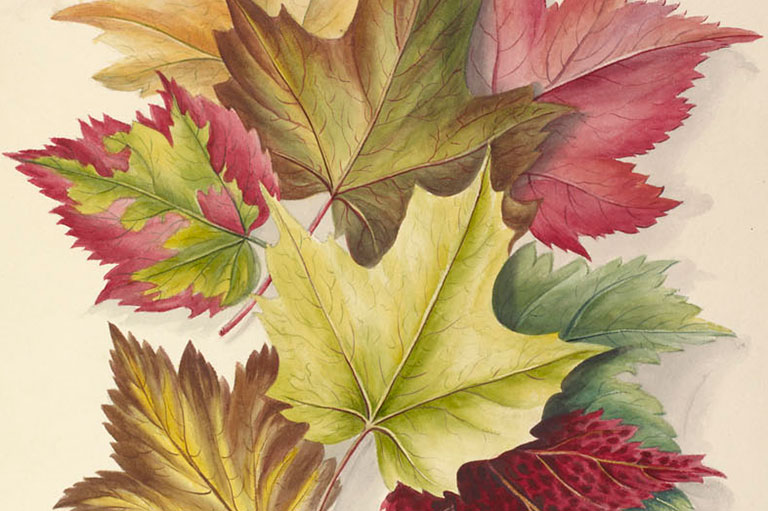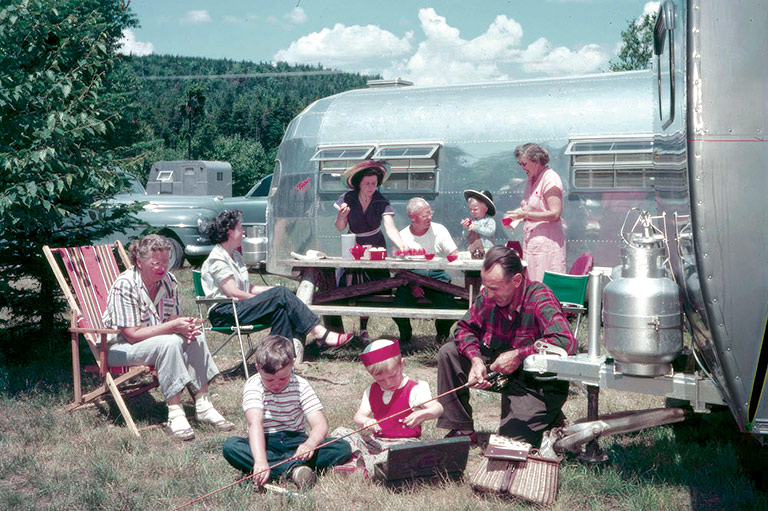The Living Stone
-
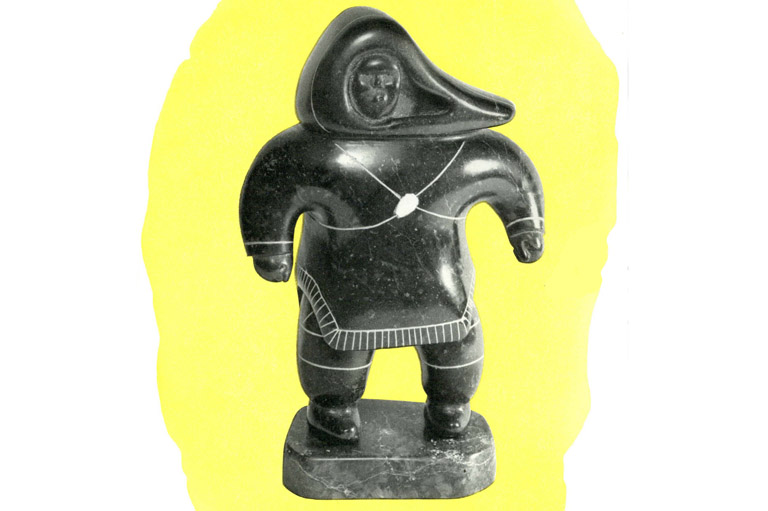 Windblown woman, by Akeeaktashook of Port Harrison.
Windblown woman, by Akeeaktashook of Port Harrison. -
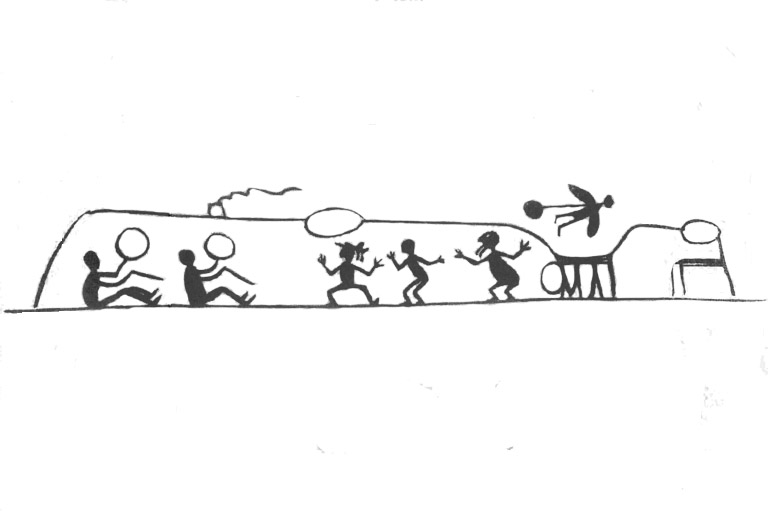 Inuit drawing of a dance house.
Inuit drawing of a dance house. -
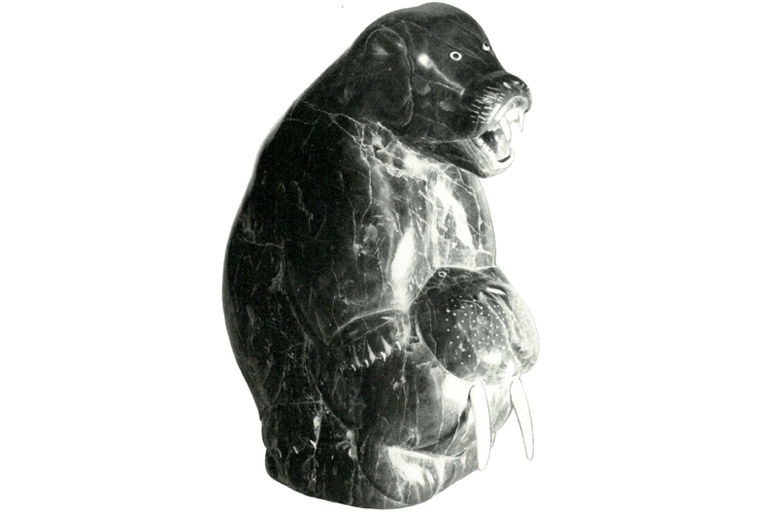 Bear attacking walrus.
Bear attacking walrus. -
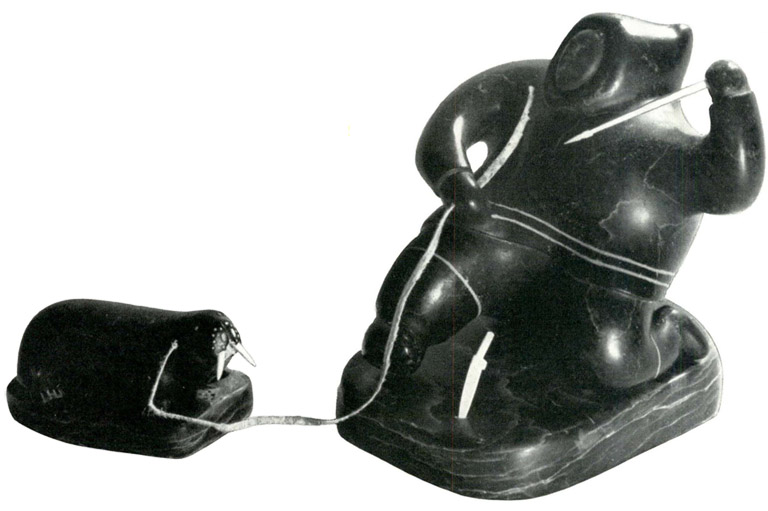 Hunter with harpooned walrus.
Hunter with harpooned walrus. -
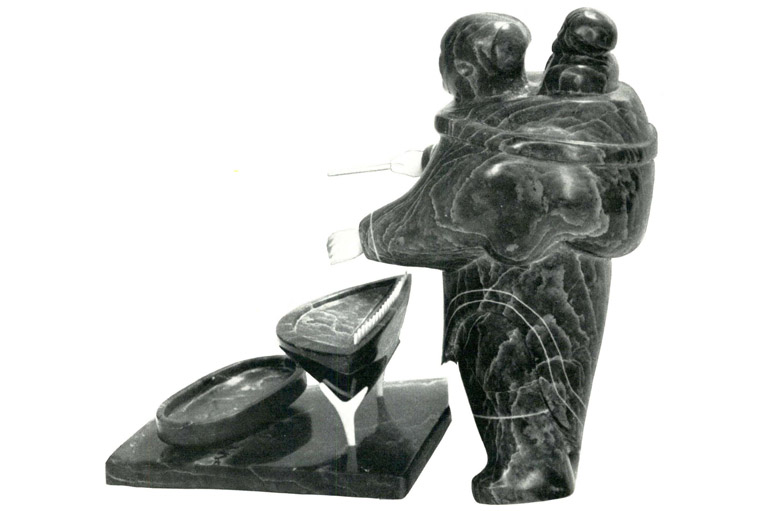 Mother tending stone lamp.
Mother tending stone lamp. -
 Women with children.
Women with children. -
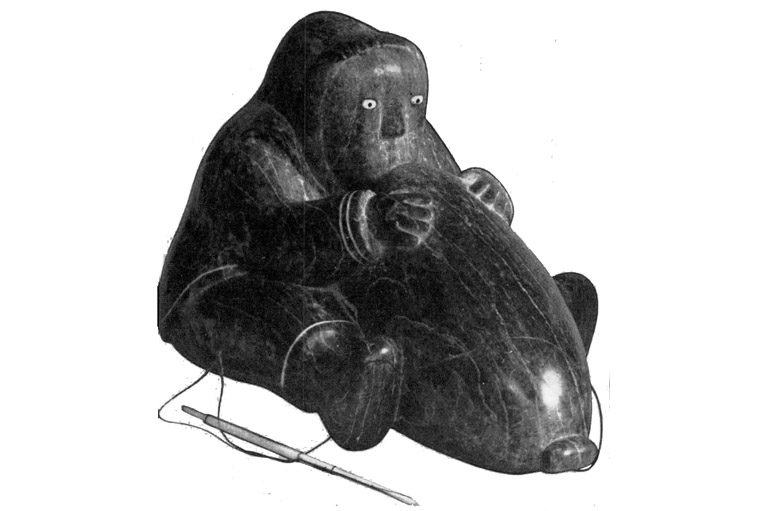 Hunter inflating sealskin float.
Hunter inflating sealskin float. -
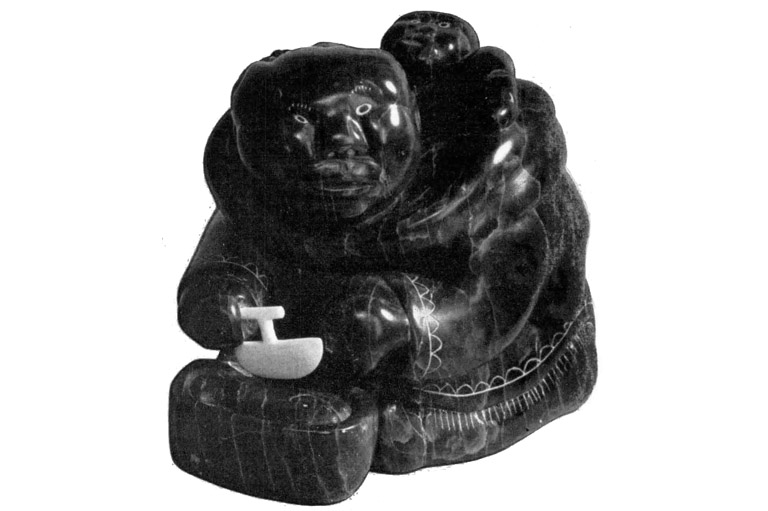 Mother using woman’s knife (ooloo).
Mother using woman’s knife (ooloo). -
 Bow-drill… rib-bone bow, vertebra mouthpiece.
Bow-drill… rib-bone bow, vertebra mouthpiece. -
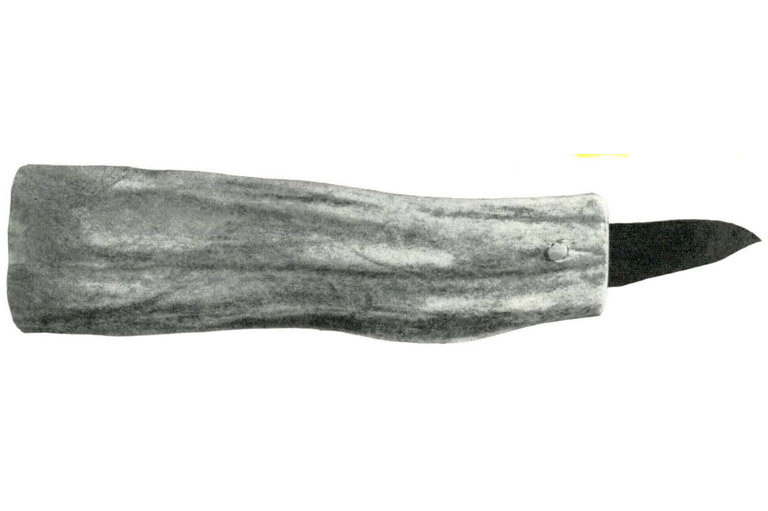 Carving knife set in antler handle.
Carving knife set in antler handle. -
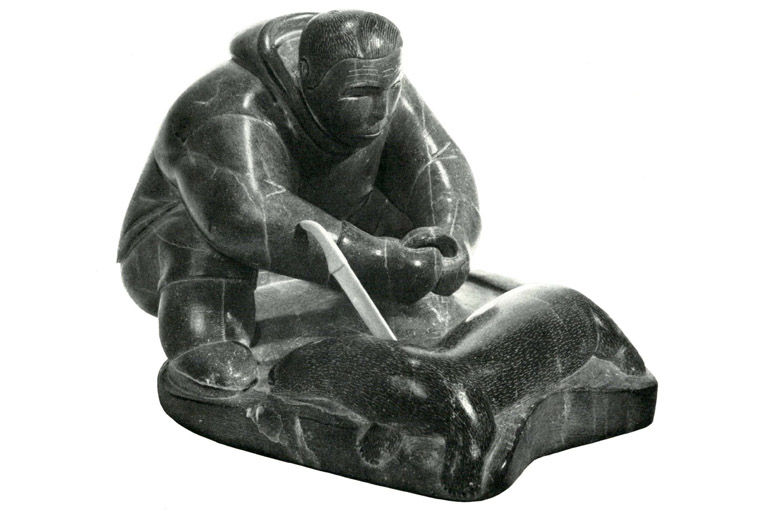 Hunter with otter and trap, by Sheruapik of Povungnetuk.
Hunter with otter and trap, by Sheruapik of Povungnetuk. -
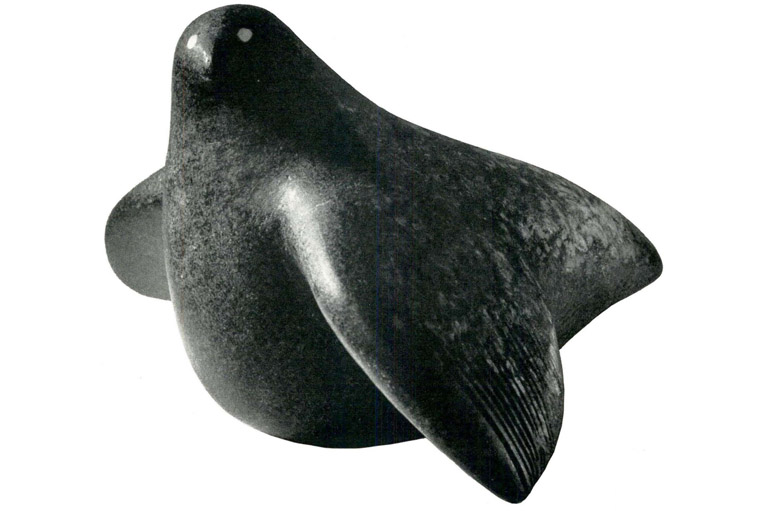 Angry Owl, from Cape Dorset.
Angry Owl, from Cape Dorset. -
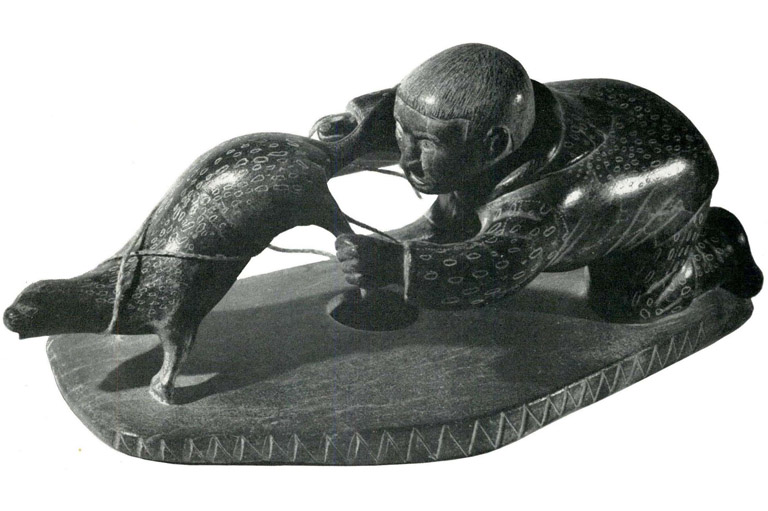 Seal trying to escape, by Simon of Cape Smith
Seal trying to escape, by Simon of Cape Smith
The pages of the Spring 1956 issue of The Beaver magazine were decorated with fanciful images from walrus tusk engravings, along with stone sculptures and implements produced by the Inuit of the eastern Arctic in the early 1950s, which became part of the Hudson's Bay Company's collection. The acquisition of the artwork was due largely to the work of James A. Houston and the Canadian Handicrafts Guild (as it was called at the time).
Houston was himself an artist who went north in search of “unspoiled landscapes” to paint. He chanced upon a ride on a Canadian Forces plane going to the station at Port Harrison (Inukjuak) in 1949, where he became aware of a large number of small ivory and stone sculptures. Considering them fresh and uncommercialized, he approached the Handicrafts Guild to help promote them. From 1950 to 1952 Houston served as an unofficial crafts officer for the association. Houston traveled through the central and eastern Arctic by airplane, dogsled, and aboard the eastern Arctic patrol vessel, the C.D. Howe, adding a much-desired romanticism to the artwork.
In 1950, Houston approached the Hudson's Bay Company. At first the company bought the handicrafts and provided credit to the Inuit artists, which they could trade for necessities at the northern stores.
The company was to become a major retailer of Inuit arts and crafts. The sales provided revenue for the organizations involved, plus a much-needed income for the Inuit, many who were near starvation due to poor fox fur and sealskin prices, as well as declining caribou herds.
By the time these images were taken by Winnipeg-based commercial photographer Paul Chipman, Houston had enlisted the cooperation of the federal government and became an employee with the Department of Northern Affairs. James Houston wrote numerous articles for The Beaver and many other magazines in an on-going effort to endorse the creative works of the Inuit.
We hope you’ll help us continue to share fascinating stories about Canada’s past by making a donation to Canada’s History Society today.
We highlight our nation’s diverse past by telling stories that illuminate the people, places, and events that unite us as Canadians, and by making those stories accessible to everyone through our free online content.
We are a registered charity that depends on contributions from readers like you to share inspiring and informative stories with students and citizens of all ages — award-winning stories written by Canada’s top historians, authors, journalists, and history enthusiasts.
Any amount helps, or better yet, start a monthly donation today. Your support makes all the difference. Thank you!
Themes associated with this article
Advertisement
With 7 uniquely curated newsletters to choose from, we have something for everyone.


